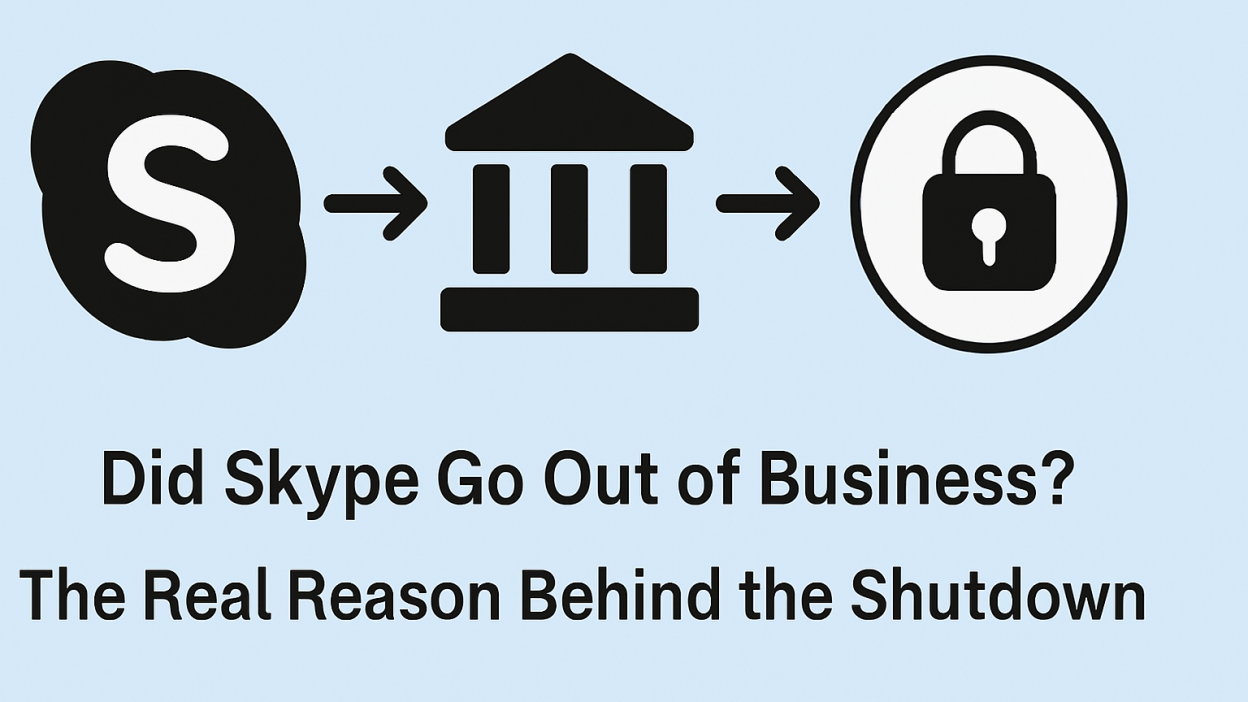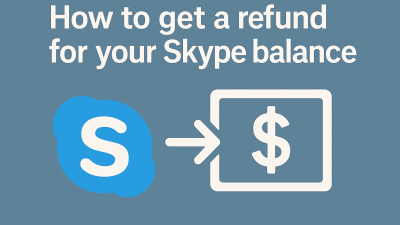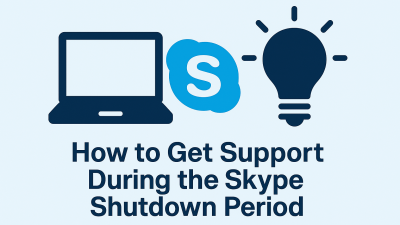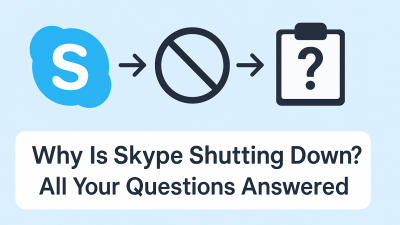You might think an app like Skype would go out with a bang. A final update. A farewell from the team. Some nostalgic montage of memories.
Instead, there was a quiet blog post. A retirement notice without ceremony. A date.
May 5, 2025. That’s when it shuts down. That’s when the login screen stops responding. That’s when the call history, the chats, the old usernames, all of it gets archived into memory and maybe a .zip file if you export fast enough.
And no, it didn’t “go out of business.” Microsoft owns Skype. It’s been theirs since 2011. The decision to shut it down wasn’t made because the company failed. It was made because the product was no longer part of the plan.
This is what it looks like when something is methodically sidelined. Not because it’s broken. Not because it lost money. But because it didn’t fit the story Microsoft was trying to write next.
Skype Didn’t Die. It Was Quietly Rewritten Out of the Script.
The mistake is thinking this is about a single app. It’s not.
Skype was a symbol. It stood for independence, for distance made smaller, for conversations without friction. It stood for tech that worked, before anyone called it “tech.”
When Microsoft bought Skype, it inherited all of that. But it also inherited a challenge: how do you take a product that people already love and fold it into something bigger without breaking it?
They tried. Sort of. For a while.
But the moment Microsoft launched Teams, Skype’s fate was sealed. Because Teams wasn’t just a new product. It was a signal. A shift in values. A commitment to integration over individuality. To centralization over specialization.
Skype was never meant to be part of that world. And Microsoft stopped pretending it was.
No Crash. No Fire. Just a Cold, Strategic Silence.
If Skype had been shut down because of some scandal, it might feel easier to explain. If it had gone bankrupt, or lost millions overnight, people would nod and move on.
But that’s not what happened.
What happened is that Microsoft had a faster-growing app with deeper enterprise roots, better cross-product syncing, and a more attractive future from a business standpoint. Skype couldn’t compete with that — not in resources, not in internal attention, not in strategic alignment.
So updates stopped. Teams got the press. Skype got legacy status.
You may not have noticed at first. That’s how this works. The decline was designed to be gradual. You log in one day and it feels a little slower. You miss a feature. You search for an answer and find nothing but forum threads from two years ago.
By the time Microsoft confirmed the shutdown, the exit had already happened. The brand was there. The soul wasn’t.
What the Shutdown Really Means
It means Skype didn’t fail. It was out-evolved.
That matters. Because the way we talk about tech often flattens everything into success or failure. But Skype’s death isn’t about decline. It’s about priority.
Microsoft is choosing Teams because it fits into a future they can control, a platform they can stretch into every device, every workflow, every corner of hybrid work and digital life.
Skype, for all its history, was too narrow. It made calls. It sent messages. It worked well. But it didn’t wrap itself around Microsoft 365. It didn’t scale into collaboration suites. It didn’t open the door to subscriptions and cloud storage and third-party integration dashboards.
So it goes.
The shutdown isn’t just about removing an app. It’s about removing an idea that a tool can exist on its own, serve a single purpose beautifully, and still survive in a market obsessed with all-in-one platforms.
What Users Saw Coming — and Ignored
For years, the signs were there.
Updates got fewer. The interface got clunkier. Support pages stayed outdated. The app that once led the world in internet calling felt like it had been frozen in time, while everything else moved forward.
But many users stayed. Out of habit. Out of loyalty. Because it still worked, and when something works, you don’t abandon it just because the design feels stale.
That’s what makes this shutdown harder to accept than most. It didn’t feel necessary. Skype wasn’t broken. It wasn’t irrelevant. It was just… inconvenient for Microsoft’s next chapter.
This wasn’t evolution. It was elimination.
There’s No Replacement for What Skype Meant
Yes, there are alternatives. Teams. Zoom. WhatsApp. FaceTime. Discord. Signal. You can replace the function.
But not the feeling.
Skype wasn’t built to be an app ecosystem. It didn’t try to be everything. It just helped people see and hear each other. It wasn’t trying to run your calendar, manage your files, or integrate your workflows. It was trying to give you a voice on the other side of the world and a window into someone else’s day.
That simplicity? It’s rare now. And whether Microsoft knew it or not, when they chose to move on, they didn’t just shut down a tool. They shut down a format of connection that didn’t need to be optimized, upgraded, or monetized to be valuable.
So No — Skype Didn’t Go Out of Business

It got boxed out by strategy. Replaced by infrastructure. Not because it couldn’t keep up, but because it wasn’t designed to play the new game.
The question isn’t whether Skype failed. The question is whether the world still makes room for apps that do one thing, and do it well, without trying to be your everything.
Microsoft answered that question already.
Now it’s your turn.
The World Didn’t Change Overnight — Microsoft Did
For most users, Skype still felt familiar. Log in, open a contact, and call. It wasn’t broken. It wasn’t abandoned in function. It just stopped evolving.
But behind the scenes, Microsoft had already shifted its gaze.
What users didn’t see — or weren’t told — was that Skype’s core had been quietly deprioritized long before the shutdown date was made public. Internal teams were shifted to focus on Teams. Updates to Skype came slower. The once-central app was now orbiting a product roadmap it no longer influenced.
That kind of strategic shift doesn’t show up in app stores. It shows up in the absence. In the missing feature that never gets fixed. In the help page that hasn’t been updated in two years. In the update that just moves the logo around.
So no, the decision to shut Skype down wasn’t abrupt. But it also wasn’t broadcast. It was a slow phase-out with a final punctuation mark added only when Microsoft had moved everything it wanted into Teams.
For the average user, that decision didn’t feel strategic. It felt personal. And empty.
User Reactions Weren’t Just Sad — They Were Tired
If you scroll through Reddit, Twitter, and tech forums, you’ll find the usual mix of sarcasm and nostalgia. But beneath the jokes, there’s a current of something deeper: exhaustion.
People are tired of their tools being pulled out from under them. Of trusting a product only to be told, years later, that it’s no longer part of the vision.
Skype was many things — but above all, it was dependable. You didn’t have to learn it. You didn’t have to manage it. It didn’t require onboarding or integrations or subscriptions. It just worked.
That’s what users are mourning. Not just the loss of a utility, but the loss of a kind of digital simplicity that rarely exists anymore.
The frustration wasn’t that Skype failed. It’s that it didn’t. It still functioned, still held memories, still served its purpose. Its death was clinical, not due to poor service or bad reviews, but because Microsoft chose to walk away.
That choice sent a clear message: software doesn’t survive by being loved. It survives by being profitable, or at least useful to the bigger product vision.
This Is What Happens When Platforms Prioritize Ecosystems Over Experiences
Microsoft isn’t the only company doing this. Google has a graveyard of products. Meta rebrands entire ecosystems. Even Apple quietly phases out features without full explanations.
What makes Skype different is how much it mattered to real people.
This wasn’t just another tool. It was embedded in lives, in rituals, in relationships, in workflows. When you used Skype, you weren’t just using a video chat app. You were meeting your team. Hearing your sister’s laugh. Taking a first language lesson with someone you’d never met before.
In a world obsessed with building interconnected platforms, Skype remained stubbornly focused. It didn’t try to be your storage, your meeting scheduler, your task manager. It just offered presence. And presence, in a distracted digital world, is rare.
The shutdown of Skype is a case study in what happens when a product built for experience is pushed aside by a platform built for strategy.
It Wasn’t Just About Competitors — It Was About Compatibility
It’s easy to point fingers at Zoom, FaceTime, or WhatsApp. But Skype didn’t lose to one app — it lost to an ecosystem it couldn’t comfortably belong to anymore.
Microsoft didn’t want parallel communication tools. It wanted one infrastructure. One place where users chat, meet, collaborate, share files, assign tasks, manage calendars. That place is Teams.
And Skype? It could never become that without being fundamentally rewritten. Not just re-coded, but reimagined from the ground up.
Doing that would’ve meant tearing apart the very thing people still liked about Skype — its simplicity, its lightness, its singular focus. So instead, Microsoft made a calculated choice to start fresh somewhere else.
They didn’t want to fix Skype. They wanted to absorb it, then move on.
What the End of Skype Says About the Apps We Trust
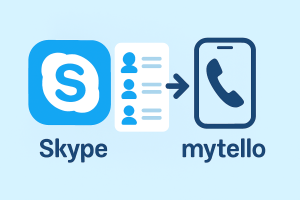
Something is jarring about having a long-standing app, one you’ve used for years, maybe decades, suddenly removed from the conversation by its creator.
It reminds users that the tech they depend on isn’t theirs. No matter how long you’ve used it, how deeply it’s embedded in your habits, your workflow, your relationships, it can be pulled, paused, reshaped, or shuttered based on decisions you’ll never see.
Skype’s end is a reminder that longevity in tech isn’t built on nostalgia. It’s built on alignment with company goals. And if your favorite app doesn’t fit the vision, no amount of fondness will keep it alive.
But that doesn’t mean users have to follow blindly.
So Where Do You Go From Here?
You have two options.
You can migrate to Microsoft Teams, which now carries many of Skype’s core features: chat, calls, contacts, even a dial pad for some users. It’s more structured. Less spontaneous. But functional.
Or you can go in a different direction entirely. If your needs are simple, personal calls, especially international, apps like MyTello, Zoom, Signal, or even mobile-native solutions may serve you better.
The point isn’t to find a clone of Skype. That doesn’t exist. The point is to choose your tools intentionally, based on what you actually need, not what the software giant says you should want.
Because that’s how Skype got here. It stopped evolving for people, and started evolving toward strategy.
Final Word: Skype Didn’t Go Quietly — We Just Stopped Being Heard
This shutdown may seem like the end of a chapter, but it’s really the end of a type of app. One built around clarity, not complexity. Presence, not productivity.
What comes next will be faster, smarter, more integrated. But it won’t be the same.
And maybe, that’s the real reason this hurts more than most platform shutdowns.
Because this wasn’t about losing features.
It was about losing something that didn’t try to do everything, just one thing, beautifully.

